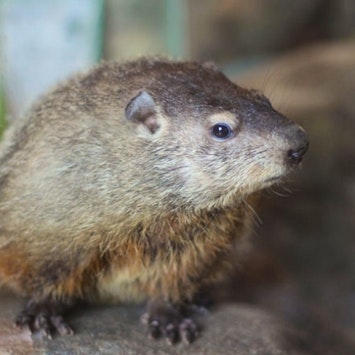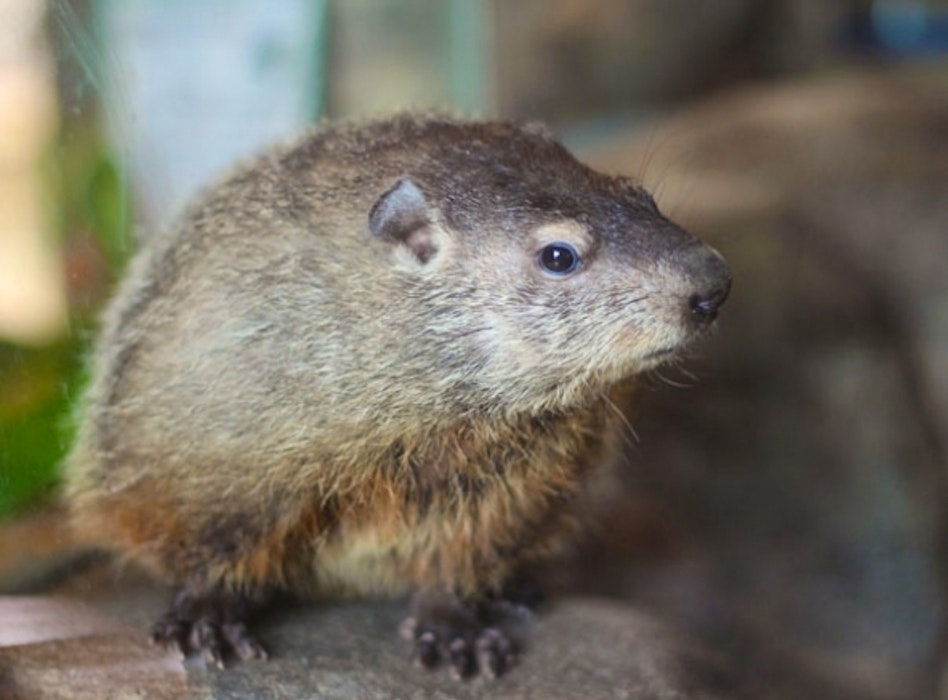Groundhog Day 2015: A young princess ascends to the throne
Discovery Place Nature

Groundhog Day is approaching and all around the United States, people eagerly await the proclamation of more wintry weather or the promise of an early spring.
Here at Charlotte Nature Museum, we recently coronated a new Queen Charlotte. As with any young royal, the process of learning what it takes to be a queen and to represent the city of Charlotte can be a daunting challenge, especially for a groundhog who is less than a year old!
So what does it take for a new groundhog to become Queen Charlotte, or for any of our animal residents to become a program animal?
For Queen Charlotte, her training has started very simply, with a goal to get her acclimated to the behaviors and manners we expect from a queen.
The first step was to get settled in her private chambers. From there, she got acquainted with her royal handler (a trained Museum Naturalist) through frequent, low-key visits to her chambers. Then we moved on to other behaviors, such as eating in close proximity to her handler, taking food from her handler and even getting used to her royal carriage (or carrier).
For this year's Groundhog Day, even though Queen Charlotte is making good progress for such a young groundhog, we feel it is best to allow her to make her prognostication from the privacy and comfort of her royal chambers.
With the patience, perseverance and passion of our Naturalists, we know young Queen Charlotte will prove worthy of her throne. We look forward to watching her hone her prognostication skills for years to come.
Groundhogs and most of our other animals at the Museum are wild animals, born with instincts for surviving out in the natural world. In addition to their instinctual behavior, many are also taught survival behaviors, such as foraging and self-defense, by their parents.
Behaviors that are crucial for an animal's survival can be counterproductive for animals used in educational programs. Many of our animals come to the Museum from wildlife rehabilitators who, for a variety of reasons, cannot successfully release them back into the wild. These animals are able to live safely and securely in a Museum exhibit or even as a program animal.
Animals used in our educational programs are exposed to lots of noises, quick movements and large groups of people. These program animals complete a lengthy training process that allows them to be safely handled and comfortable in their role as an ambassador for their species.
An animal behavior that may seem so simple, such as eating while a human is near, is actually the product of a step-by-step process achieved with positive reinforcement. Behaviors such as getting in and out of a carrier or a trip to the veterinarian are very stressful for wild animals. These trained behaviors are necessary for the safety of the animal, our Naturalists and medical staff.
These behaviors must be encouraged and taught to the animals through a carefully designed training program and consistent training sessions with our Naturalists. A queen's work is never done!
Please stop by the Museum's Creature Cavern Tuesday-Sunday to welcome Queen Charlotte in her new role. We will be celebrating Groundhog Day throughout the month of February with a variety of weather-themed activities and a special Puppet Show.

